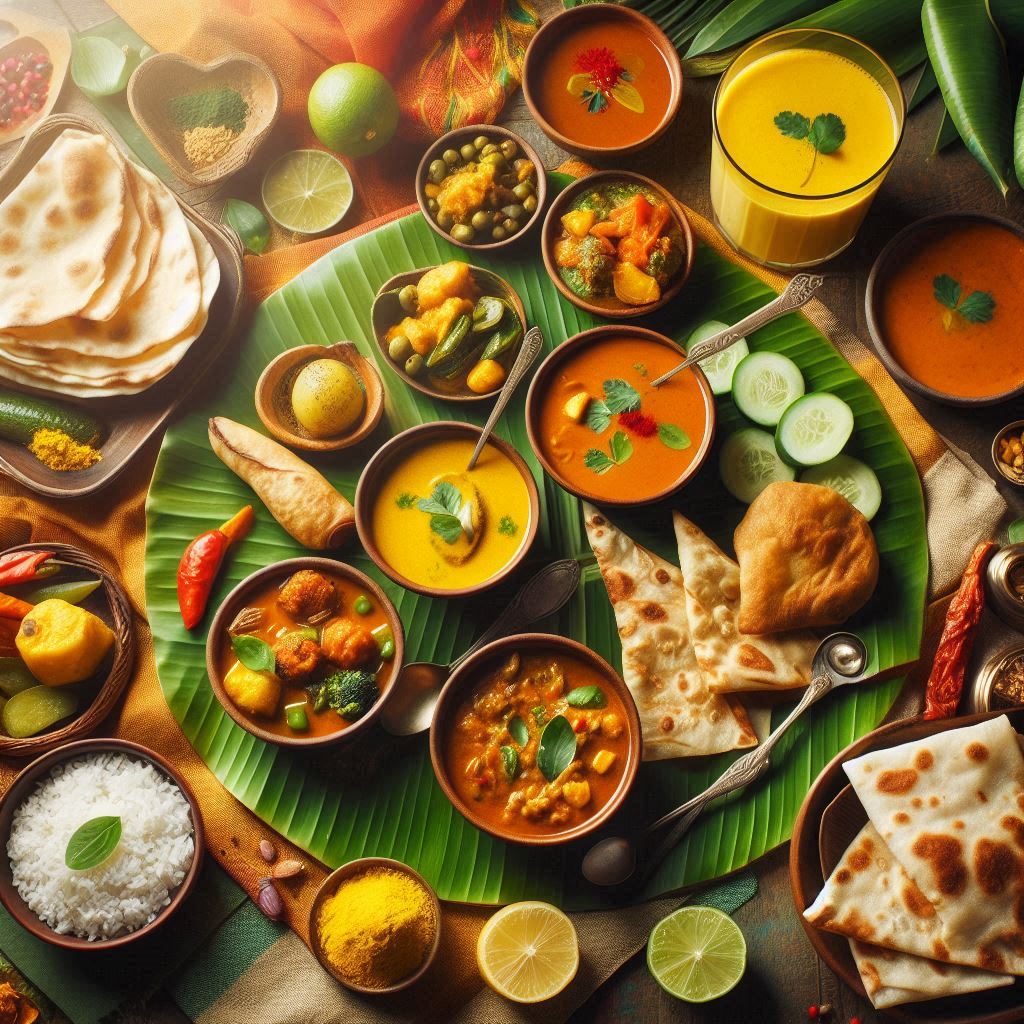FOOD
Exploring the Wonderful World of Food: A Journey Through Taste, Culture, and Health Food is far more than sustenance; it’s a cultural cornerstone, a creative outlet, a source of pleasure, and a vital contributor to our health. Around the world, food holds different meanings and cultural significance. From fine dining experiences to street food stalls, every meal tells a story, embodying flavors that carry generations of tradition and creative expression. Food as Culture: A Universal Language No matter where you go, food remains a universal language that transcends borders and unites people. Each culture has unique dishes that reflect its heritage, resources, and values. For example, Japanese cuisine’s precision and balance reflect the cultural emphasis on harmony and simplicity. Traditional Italian dishes like pasta and pizza carry stories of resourcefulness, blending simple ingredients to create deeply flavorful meals. Across cultures, food rituals also highlight what communities hold dear. In India, food is often tied to religious practices, with offerings made to deities and festivals celebrated with extensive feasts. Meanwhile, in the Middle East, sharing food is a symbol of hospitality and respect. By gathering around a table, people build bonds and strengthen relationships, sharing not only food but stories, laughter, and moments of connection. In addition, food festivals worldwide are a testament to this universal language. Events like Spain’s La Tomatina and Thailand’s Vegetarian Festival celebrate food in playful and respectful ways. These celebrations allow people to connect, share, and celebrate the diversity of food, creating memories that transcend differences. The Art and Science of Cooking Cooking is both an art and a science. It is a creative process that requires technique, innovation, and a deep understanding of how flavors, textures, and aromas interact. The art of cooking lies in the ability to combine ingredients and bring out their best qualities. Chefs are often considered artists, using their culinary skills to create dishes that look as beautiful as they taste. The rise of molecular gastronomy, for example, has pushed the boundaries of what we thought was possible with food. By incorporating science into cooking, chefs create innovative dishes that surprise and delight diners. However, cooking is also deeply personal. Home-cooked meals, often based on family recipes, connect us to our roots and provide comfort. For many, cooking is an expression of love and care. Preparing a meal for loved ones, adjusting recipes to suit their tastes, and experimenting with ingredients to recreate cherished dishes from childhood all bring joy. Food and Health: Nourishing the Body and Mind Food plays a crucial role in our health, affecting everything from our energy levels to our mental well-being. With the rise of processed foods, many are shifting focus toward whole foods that are minimally processed and rich in nutrients. Eating a balanced diet that includes vegetables, fruits, whole grains, and lean proteins supports our immune system, improves mental clarity, and reduces the risk of chronic diseases. The movement toward plant-based diets is gaining traction due to its health benefits and environmental impact. Plant-based diets are rich in fiber, vitamins, and minerals, and they support sustainable farming practices by reducing the need for large-scale animal agriculture. Many people find that a plant-based diet helps them feel more energized and improves their overall health. Food also impacts our mental health. A diet rich in omega-3 fatty acids, vitamins, and minerals can reduce symptoms of anxiety and depression. Comfort foods, which often remind us of home, also play a psychological role. These foods can trigger feelings of nostalgia and comfort, making them ideal during times of stress or uncertainty. Food Trends: The Evolution of Eating The food world is constantly evolving, with new trends and innovations reshaping the way we eat. In recent years, food trends have included plant-based meat alternatives, sustainable packaging, and farm-to-table initiatives. Advances in food technology have made it possible to create alternatives to traditional foods, like lab-grown meat and dairy-free cheeses, catering to those who seek sustainable choices. In addition to technology, social media has played a huge role in shaping food trends. Platforms like Instagram and TikTok popularize everything from avocado toast to Dalgona coffee, inspiring people to try new recipes at home and making food a form of entertainment. The viral nature of these platforms gives rise to short-lived trends, yet some dishes become enduring favorites. Conclusion: Embracing the Diversity of Food Food offers a unique journey for each person, blending cultural traditions, creative innovation, and a focus on health. It brings us together, sparks our curiosity, and provides essential nourishment. Embracing the diversity of food and exploring new flavors, ingredients, and recipes helps us connect to a world far bigger than ourselves. From the simplest meals to the most complex dishes, food reminds us that life is meant to be savored, one bite at a time.
